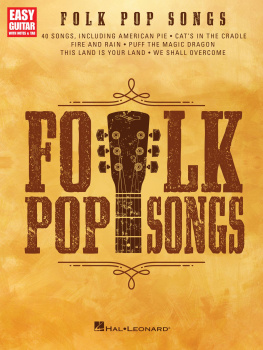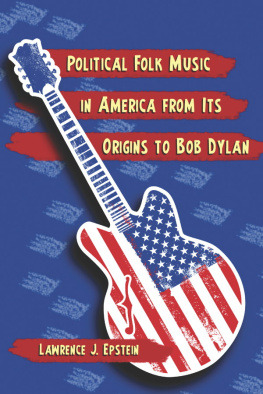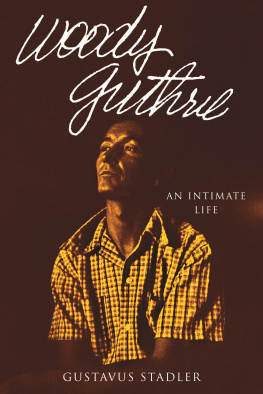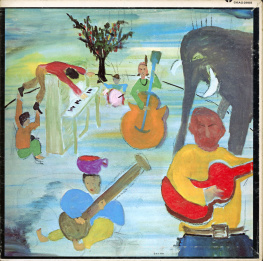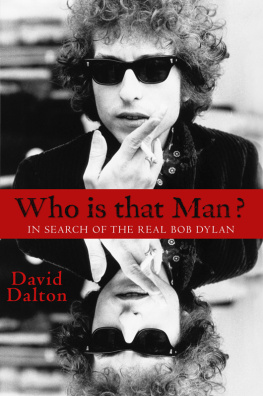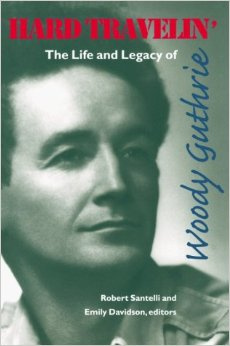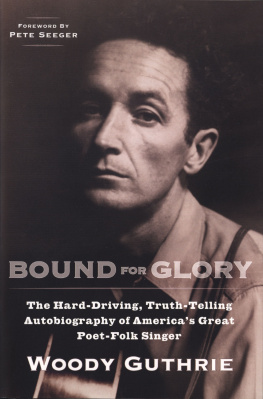
Lead Belly, Woody Guthrie, Bob Dylan, and American Folk Outlaw Performance
With its appeal predicated upon what civilized society rejects, there has always been something hidden in plain sight when it comes to the outlaw figure as cultural myth. Damian A. Carpenter traverses the unsettled outlaw territory that is simultaneously a part of and apart from settled American society by examining outlaw myth, performance, and perception over time. Since the late nineteenth century, the outlaw voice has been most prominent in folk performance, the result being a cultural persona invested in an outlaw tradition that conflates the historic, folkloric, and social in a cultural act. Focusing on the works and guises of Lead Belly, Woody Guthrie, and Bob Dylan, Carpenter goes beyond the outlaw figures heroic associations and expands on its historical (Jesse James, Billy the Kid), folk (John Henry, Stagolee), and social (tramps, hoboes) forms. He argues that all three performers represent a culturally disruptive force, whether it be the bad outlaw that Lead Belly represented to an urban bourgeoisie audience, the good outlaw that Guthrie shaped to reflect the social concerns of marginalized people, or the honest outlaw that Dylan offered audiences who responded to him as a promoter of clear-sighted self-evaluation. As Carpenter shows, the outlaw and the law as located in society are interdependent in terms of definition. His study provides an in-depth look at the outlaw figures self-reflexive commentary and critique of both performer and society that reflects the times in which they played their outlaw roles.
Damian A. Carpenter is a Postdoctoral Fellow in English at East Tennessee State University, Johnson City, USA.
Outlaws in Literature, History, and Culture
Edited by Lesley A. Coote and Alexander L. Kaufman
Outlaws in Literature, History, and Culture examines the nature, function, and context of the outlaw and the outlawedpeople, spaces, practicesin the pre-modern world, and in its modern representations. By its nature, outlawry reflects not only the outlawed, but the forces of law which seek to define and to contain it. Throughout the centuries, a wide and ever-changing, and yet ever familiar, variety of outlaw characters and narratives has captured the imagination of audiences both particular and general, local and global. This series seeks to reflect the transcultural, transgendered and interdisciplinary manifestations, and the different literary, political, socio-historical, and media contexts in which the outlaw/ed may be encountered from the medieval period to the modern.
Series Advisory Board:
Sayre N. Greenfield, University of Pittsburgh at Greensburg
Kevin J. Harty, La Salle University
Valerie B. Johnson, Georgia Institute of Technology
Stephen Knight, University of Melbourne
John Marshall, University of Bristol
Joseph F. Nagy, University of California, Los Angeles
Thomas H. Ohlgren, Emeritus, Purdue University
W. Mark Ormrod, University of York
Helen Phillips, Cardiff University
Graham Seal, Curtin University
Linda Troost, Washington and Jefferson College
Charles van Onselen, University of Pretoria
The Ecology of the English Outlaw in Medieval Literature
By Sarah Harlan-Haughey
Robin Hood in Outlaw/ed Space
Media, Performance, and Other New Directions
Edited by Lesley Coote and Valerie B. Johnson
Lead Belly, Woody Guthrie, Bob Dylan, and American Folk Outlaw Performance
Damian A. Carpenter
Lead Belly, Woody Guthrie, Bob Dylan, and American Folk Outlaw Performance
Damian A. Carpenter
First published 2018
by Routledge
2 Park Square, Milton Park, Abingdon, Oxon OX14 4RN
and by Routledge
711 Third Avenue, New York, NY 10017
Routledge is an imprint of the Taylor & Francis Group, an informa business
2018 Damian A. Carpenter
The right of Damian A. Carpenter to be identified as author of this work has been asserted in accordance with sections 77 and 78 of the Copyright, Designs and Patents Act 1988.
All rights reserved. No part of this book may be reprinted or reproduced or utilised in any form or by any electronic, mechanical, or other means, now known or hereafter invented, including photocopying and recording, or in any information storage or retrieval system, without permission in writing from the publishers.
Trademark notice: Product or corporate names may be trademarks or registered trademarks, and are used only for identification and explanation without intent to infringe.
British Library Cataloguing-in-Publication Data
A catalogue record for this book is available from the British Library
Library of Congress Cataloging-in-Publication Data
Names: Carpenter, Damian A. author.
Title: Lead Belly, Woody Guthrie, Bob Dylan and American folk outlaw performance / by Damian A. Carpenter.
Description: Abingdon, Oxon; New York, NY: Routledge, 2018. |
Series: Outlaws in literature, history, and culture; 3 | Includes bibliographical references and index.
Identifiers: LCCN 2017028239 (print) | LCCN 2017029195 (ebook) | ISBN 9781315591759 (ebook) | ISBN 9781472484420 (alk. paper) Subjects: LCSH: Folk songsUnited StatesHistory and criticism. | Outlaws in music. | Leadbelly, 1885-1949. | Guthrie,
Woody, 1912-1967. | Dylan, Bob, 1941-
Classification: LCC ML3570 (ebook) | LCC ML3570 .C37 2018 (print) | DDC 781.64092/273dc23
LC record available at https://lccn.loc.gov/2017028239
ISBN: 978-1-4724-8442-0 (hbk)
ISBN: 978-1-315-59175-9 (ebk)
Typeset in Sabon
by Deanta Global Publishing Services, Chennai, India
For Lisa.
My greatest find amid Woodys work.
Frontispiece: Lookin for a Home. Artist: Jeff Tocci.
Contents
Long ways
from home: Introduction
I would like to thank Dr M. Jimmie Killingsworth, Dr William Bedford Clark, Dr David McWhirter, Dr John Lenihan, and Dr Marian Eide for their guidance and support in developing this study. Thanks also go to Nora Guthrie, Anna Canoni, and Tiffany Colannino at the former Woody Guthrie Archive (abbreviated as WGA throughout the book)/Woody Guthrie Publications in New York for their help and input. Additional thanks to the former Woody Guthrie Archive and the Melbern G. Glasscock Center for Humanities Research for granting me research fellowships and to the Texas A&M University English Department for additional funding.
Jeff Tocci, the artist who provided the cover illustration ( Lookin for a Home ), also deserves much thanks. For a long time I had a notion as to what I wanted the cover to look like, conceptually. Jeff made it a reality. Id like to think our early days of musical collaboration in my folks North Country basement were as stunning, but alas, no bootlegs survive (I hope). And thinking of the old days, when I was a budding Dylan fan, Id be remiss not to acknowledge John Sipowicz, my constant companion in all things Bob: countless concerts, countless days sitting in that room with countless recordings, countless hours spent in lyrical conversation clouded by nag champa ten thousand dollars at the drop of a hat, bud.


